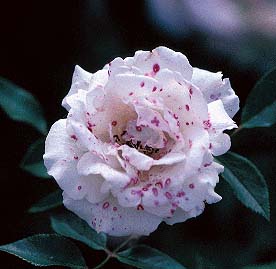 |
 |
Prepared by Maher Jabado
Botrytis Funghus disease (Gray mold)
 |
 |
Gray mold (Botrytis) — This fungus attacks senescing plant tissue
such as the petals of flowering ornamentals
such as African violet, begonia, hydrangea,
chrysanthemum, exacum, geranium, impatiens,
marigold, poinsettia, snapdragon, flowering
ornamentals particularly during periods of
high humidity and little air movement. Leaves
often become infected where petals have fallen
on the leaf tissue. It is the most common
foliage disease on greenhouse grown crops
and is difficult to control without careful
monitoring and management of the environmental
conditions in the greenhouse. Lesions on
infected plants produce a multitude of spores
giving the disease its common name ‘gray
mold.’ The spores are liberated by air currents,
watering, or any worker-associated activity
such as disbudding, pruning, or spraying
pesticides. Fenhexamid, chlorothalonil and
strobilurin fungicides provide some prevention
of disease but fungicide resistance is common
to thiophanate-methyl and dicarboximide based
fungicides
Chlorothalonil (Concorde, Daconil Ultrex, Echo 720, Termil, 2787) — chloronitrile: This product is one of the most widely used fungicides in this industry. It is used as foliar spray, a soil drench, and as a greenhouse fumigant/smoke in the greenhouse industry (Termil). The product is labeled on numerous crops and has long standing grower acceptance and is valuable in pesticide resistance management of fungal leaf spots, powdery mildew, rust and Botrytis diseases.